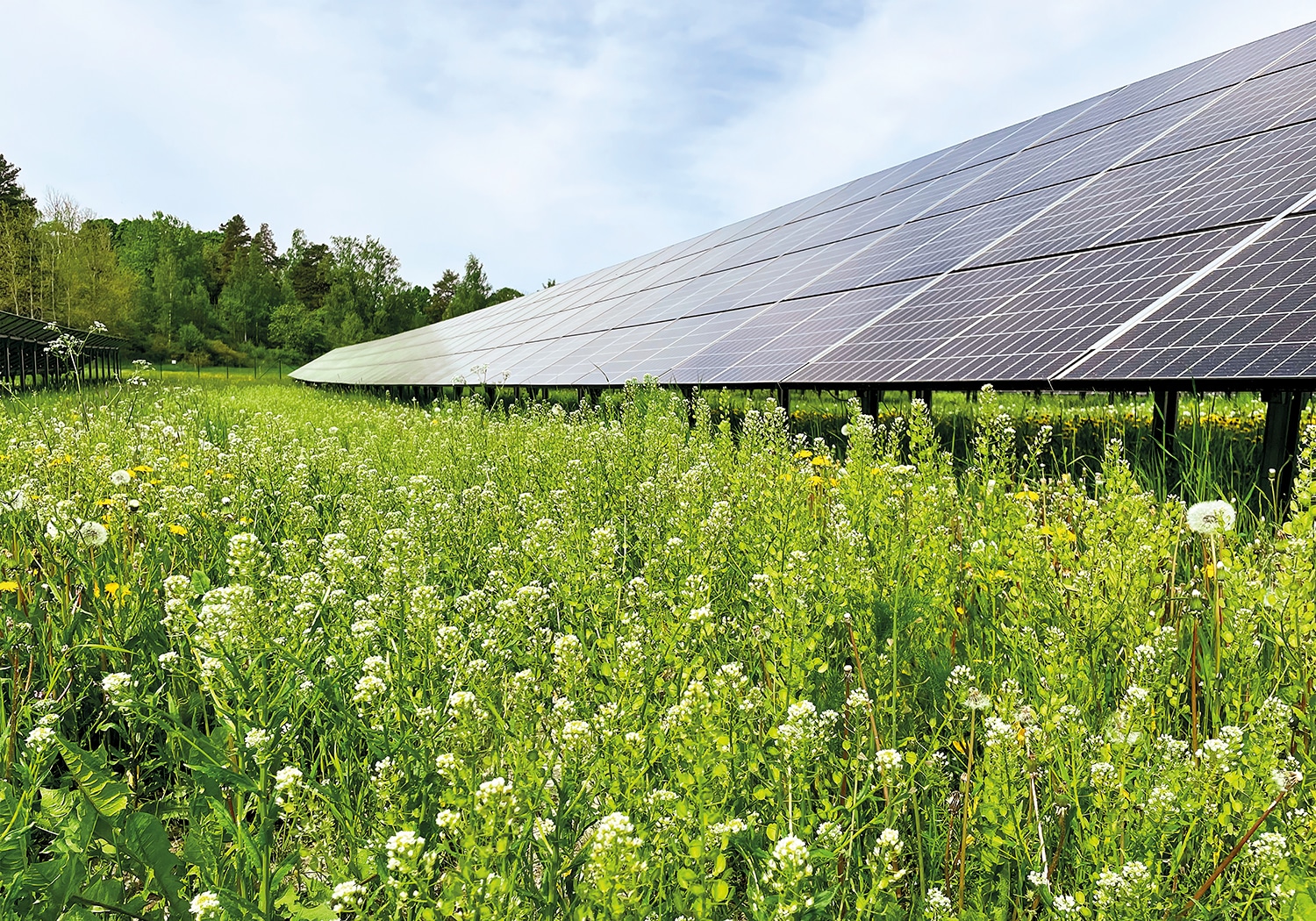As part of an ambitious sustainability project, Prästlönetillgångarna in Skara diocese is planning to build two solar parks in Bottnaryd between Ulricehamn and Jönköping. The two parks are located in a former gravel pit and could produce 17 million kWh annually, which represents about 70% of the total electricity consumption of the Diocese of Skara and corresponds to the annual consumption of 1,000 people. 400 villas.
The priestly salary assets in Skara diocese have a thousand-year history of managing land, and see the need to actively contribute to the necessary transition to more renewable electricity production. In the strategic work, based on the Swedish Church’s roadmap for the climate and the milestone goal for the production of renewable electricity, both small and large projects are carried out by leasing land but also investments in self-owned production facilities.
Gert Adolfson, Property Manager at Skara Diocese, and Sture Kjell, Chairman of the Property Committee in Skara Diocese, see great potential in the continued work on renewable electricity production.
The Church of Sweden’s goal is to be climate neutral by 2030 and the production of renewable electricity is an important tool for achieving this goal,” says Gert Adolfson.
Enabling future electricity supply
The land in question for this project is a former gravel pit outside Bottnaryd that is waiting for another type of use because it is not possible to grow forest on it. Although the land is very unproductive, it can now continue to serve a purpose and enable future electricity supply. The geographical location, with its proximity to the grid and few neighbors, also makes it a good area to build on.
Solar power is not new to the Church of Sweden; for many years, it has installed solar panels on both roofs and land wherever conditions have been available. In the Diocese of Skara alone, nearly 30 plants are currently in operation and together they can produce around 900,000 kWh annually. The goal is to produce as much electricity as the 400+ properties consume in the future, and the construction of two solar parks is a big step towards this goal. The maximum production of the Bottnaryd project is about 17 million kWh annually, which corresponds to about 70% of the total consumption of all properties in the diocese.
Cooperation with Energy Commitments
To help them, Prästlönetillgångarna i Skara diocese has hired EnergiEngagemang, which has been commissioned to build the two parks.
It is with great pleasure that we take on this project together with the Priestly Salary Assets in the Diocese of Skara. Expanding Sweden’s electricity production is incredibly important, especially in southern Sweden where the need is greatest. “By leasing land for solar power production, the Church of Sweden and the Priestly Assets in the Diocese of Skara show great commitment to both their own sustainable development and the local community,” says Jonas Helander, CEO of EnergiEngagemang.
Hampus Carlsson, project manager for permits and consultations at EnergiEngagemang, points out that the area for the planned solar parks is optimal for solar electricity production.
The two solar parks are planned on former gravel pits that are not suitable for cultivation or forest production. With our solar park design, however, we can create good conditions for increased biodiversity. A gravel pit is also relatively easy to work, which is good for the overall calculation. In addition, there is already good network capacity in the area.
EnergiEngagemang has high hopes for a smooth authorization process. The aim is for the parks to be ready to start delivering green fossil-free electricity by 2025. However, this will depend on how long it takes for the authorities to give their approval. The construction itself is then very fast, in just a few months from the groundbreaking, a solar farm can be ready to deliver electricity to the grid.

